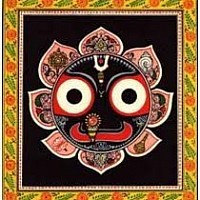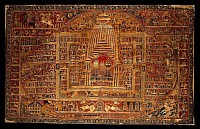Purushottama Kshetram
Puri Jagannath Temple history (Kshetra mahathmiyam)
The Jagannath Temple is an important Hindu temple dedicated to Jagannath, a form of Vishnu - one of the trinity of supreme divinity in Hinduism. Puri is in the state of Odisha, on the eastern coast of India. The present temple was rebuilt from the tenth century onwards, on the site of pre-existing temples in the compound but not the main Jagannatha temple, and begun by Anantavarman Chodaganga, the first king of the Eastern Ganga dynasty.The temple is sacred to all Hindus, and especially in those of the Vaishnava traditions. The temple is sacred to all Hindus, and especially in those of the Vaishnava traditions. Many great Vaishnava saints, such as Ramanujacharya, Madhvacharya, Nimbarkacharya.
Vallabhacharya and Ramananda were closely associated with the temple.
Ramanuja established the Emar Mutt near the
temple and Adi Shankaracharya established
the Govardhan Math, which is the
seat of one of the four Shankaracharyas. It is also of particular significance
to the followers of Gaudiya Vaishnavism,
whose founder, Chaitanya Mahaprabhu,
was attracted to the deity, Jagannath, and lived in Puri for many years.
The temple was rebuilt by the Ganga dynasty king Anantavarman Chodaganga in the 12th century CE, as suggested by the
Kendupatna copper-plate inscription of his descendant Narasimhadeva II. Anantavarman was originally a Shaivite, and became a Vaishnavite sometime after he conquered the Utkala region (in which the temple is located) in
1112 CE. A 1134–1135 CE inscription records his donation to the temple.
Therefore, the temple construction must have started sometime after 1112 CE.


